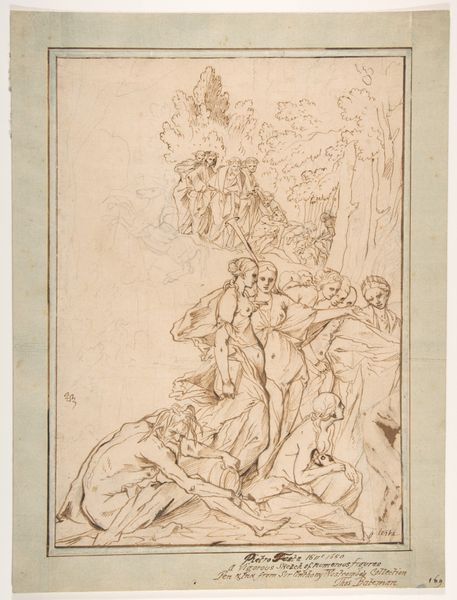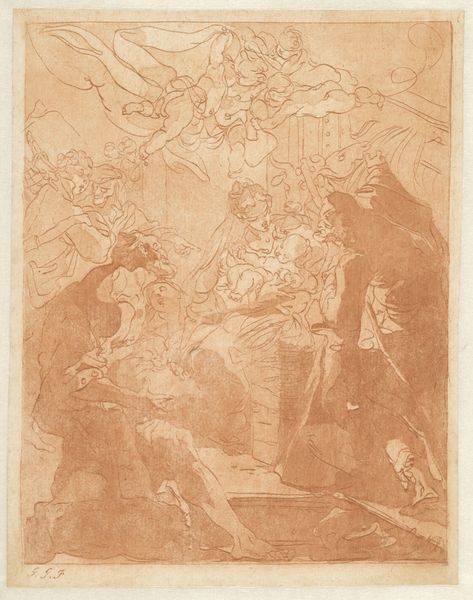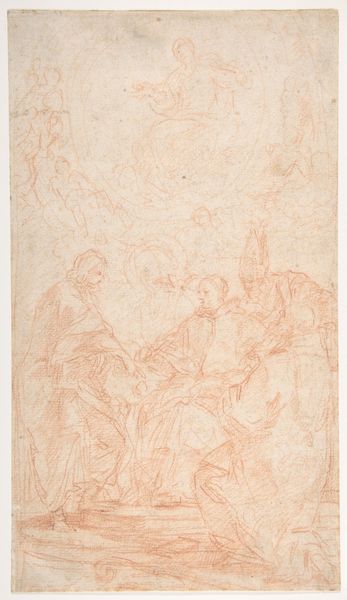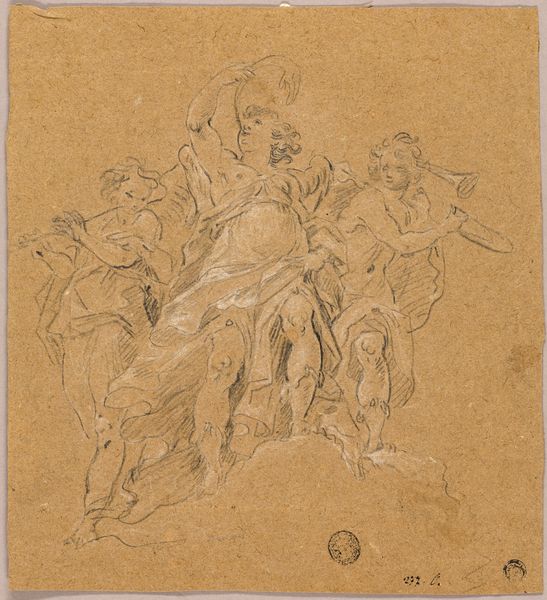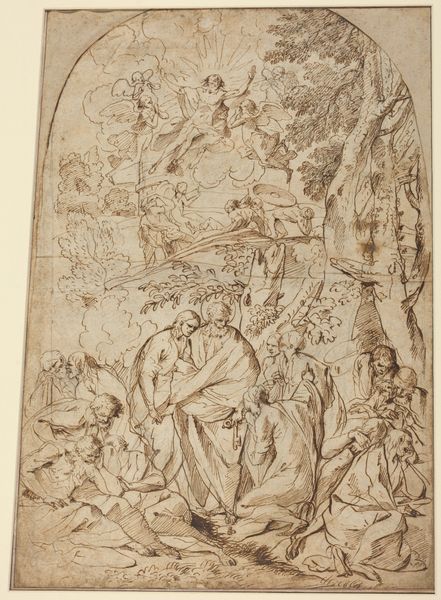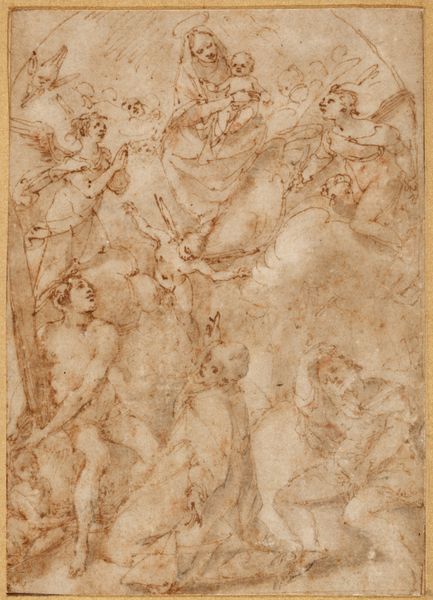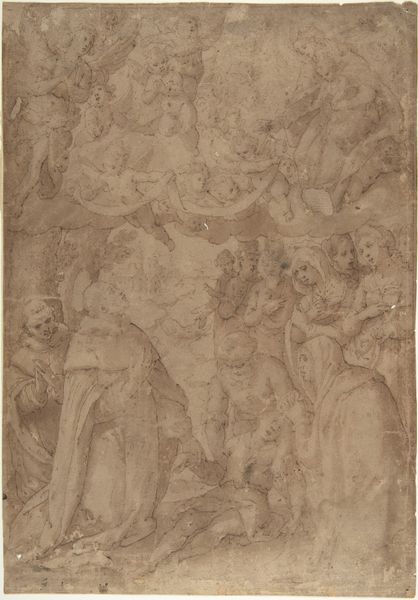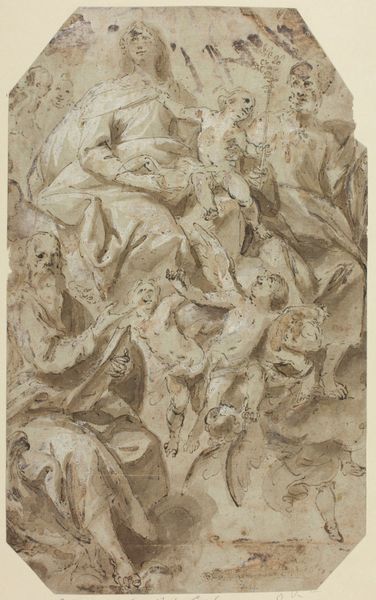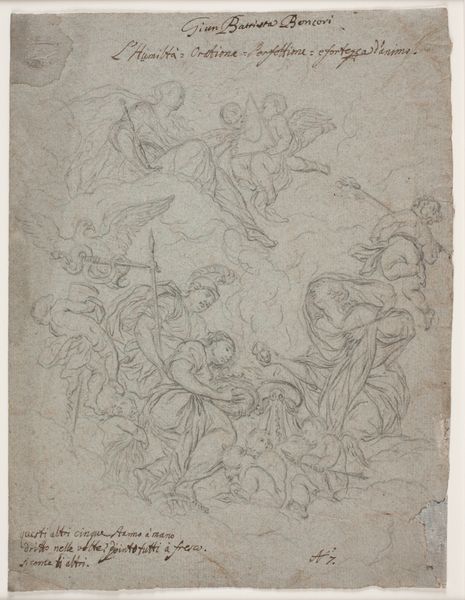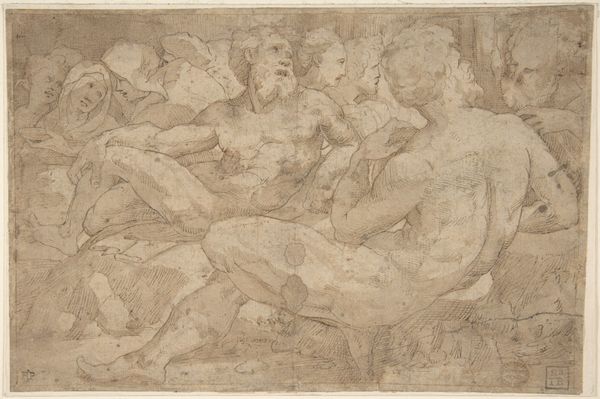
drawing, paper, ink, pen
#
drawing
#
allegory
#
figuration
#
paper
#
11_renaissance
#
ink
#
pen
#
history-painting
#
academic-art
Dimensions: 309 mm (height) x 248 mm (width) (bladmaal)
Curator: Here we have "Mariæ Himmelfart," an intriguing drawing that resides within the collection of the SMK, dating from sometime between 1527 and 1700. Editor: It certainly captures the eye, a vortex of figures rendered in pen and ink. It strikes me as having a theatrical, almost baroque quality, despite being a drawing. Curator: Indeed, the upward surge is masterfully conveyed. Consider the arrangement of figures, the Madonna centrally placed, surrounded by adoring cherubs and figures, all directing the viewer’s eye upward. The use of light and shadow, even in ink, provides a dramatic chiaroscuro effect. Editor: I am particularly interested in how it would function socially at that time, given the overt religious subject matter, as a potential preparatory study, perhaps? I am also intrigued by this anonymous label - what does it mean in relation to the image's historical meaning? Curator: Precisely, the drawing likely served a specific purpose, as part of the artistic process for the production of larger altarpieces which often followed prescribed formulas established by patrons, theologians and workshop masters. Editor: Did these masters impose their ideology upon artists as to what such artworks had to portray, and did this limit artistic and social expression at that time? Curator: To an extent, yes. There were religious conventions in play in these kind of artworks that an artist could rarely challenge and so this limited the artist’s scope for personal and stylistic self-expression. However, an artwork's inherent material properties cannot be denied - the flow of the ink, the layering, creates an incredible texture. Look how that textured materiality affects the viewing experience Editor: And also affected then too! Its very materiality would become part of a socio-cultural dialogue. It is also quite rare to be able to see those steps. I find myself reflecting on how much we have lost over time in regards to not only the maker of the art, but what their position and social circumstances would have been too. Curator: I find your insights on this art very pertinent and accurate, highlighting the intricate layers of formal and socio-historical interpretation involved in unlocking the historical potential and value of art. Editor: And to reflect and interpret how viewers through time react to what we view today! A very stimulating exercise and valuable discourse indeed.
Comments
No comments
Be the first to comment and join the conversation on the ultimate creative platform.
